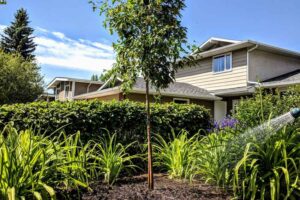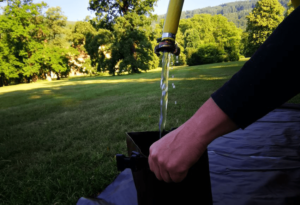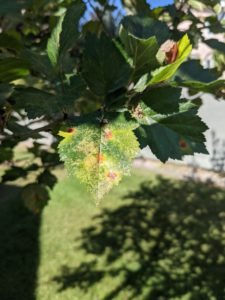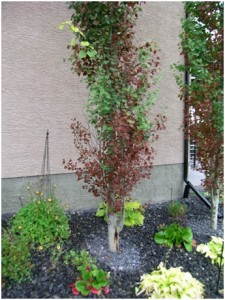There is something quite special about planting something that will most likely outlive you and become the home for many organisms throughout its life. Planting a new tree is in my opinion one of the most positive ways of contributing to the long term health and sustainability of our urban landscape. However, if not planted [...]
Watering trees is easy when you know where and when to do it. With an extremely hot, dry summer as we have had over the past few years, applying water is necessary but doing it correctly will help your trees through the drought and help reduce the amount of water that needs to be applied. [...]
In the fall it is common to see that your evergreens have needles turning color, especially on the inside of the canopy. The needles of conifers have a life span that varies from one, to several years depending on the tree species. The interior needles change to a yellow or orange color before dropping off [...]
This disease of hawthorns and juniper shrubs is becoming more common. The disease requires two hosts to complete its life cycle (Juniper and Hawthorn). The symptoms look very different in the two host species. Key Points Minor infestations may look objectionable but cause little damage to the Hawthorn tree Chemical controls may be possible using [...]
Normally our summers are too dry for the development of Fire blight, but in 2008 our spring and early summer were warm and wet enough to result in rapid spread of the disease. Since then we have seen the disease randomly affect Hawthorn, Mountain Ash, Pear, Crab Apple, Apple and Cotoneaster. This bacterial disease can [...]
This fungal disease affects many Poplar and Aspen species. Both Tower Poplar and Swedish Columnar Aspen are highly susceptible to the disease, which is unfortunate due to the number of these trees in Calgary. Bronze Leaf Disease affects only Poplars but not all poplar species are susceptible. Fungal Spores are transferred by air causing infection [...]







